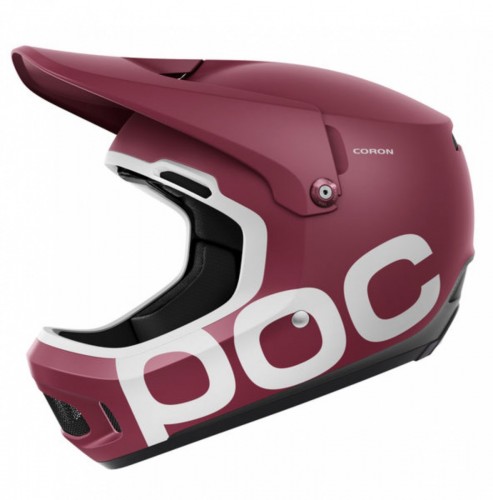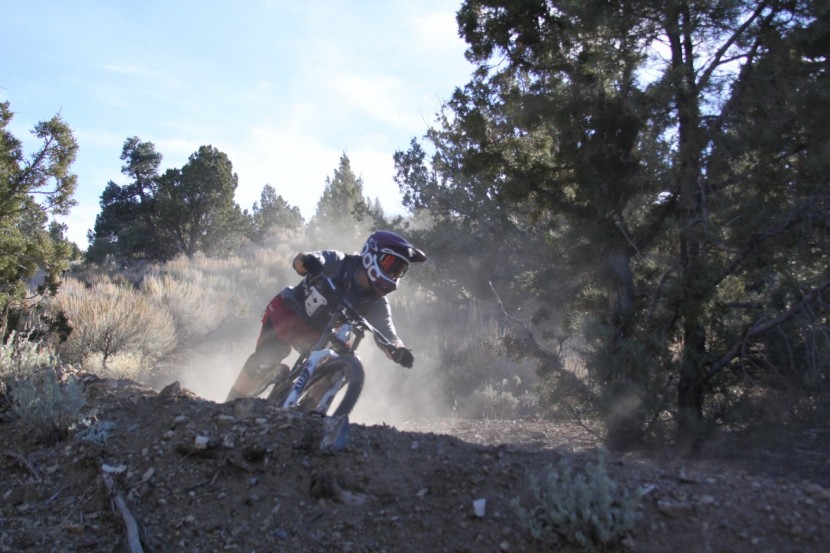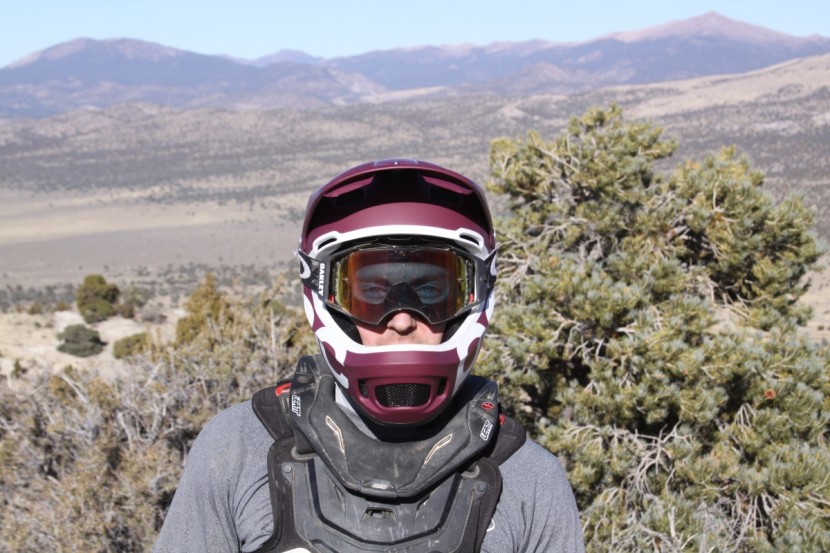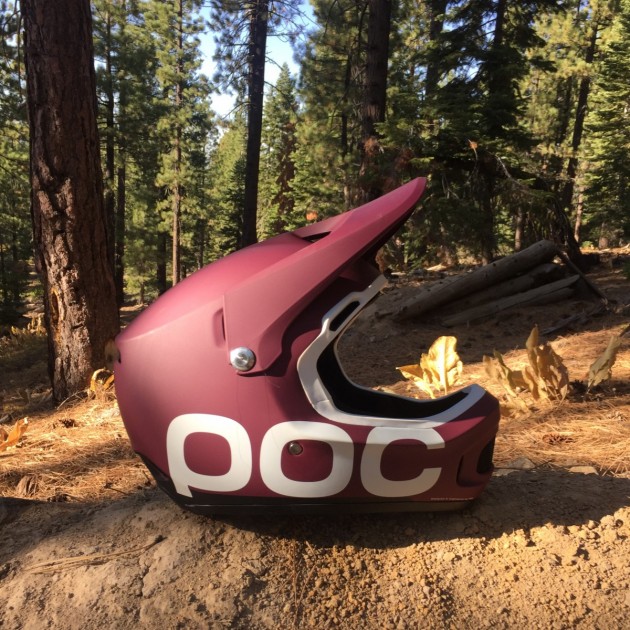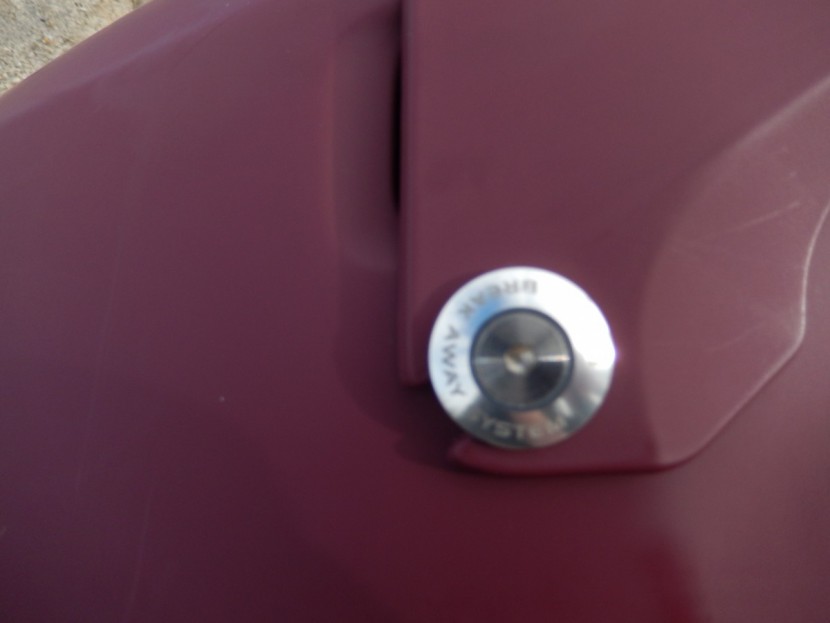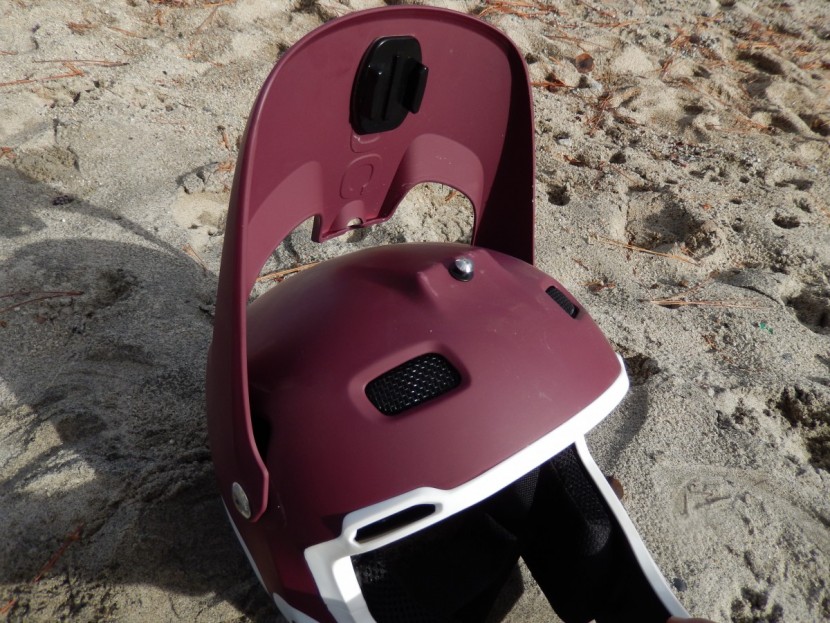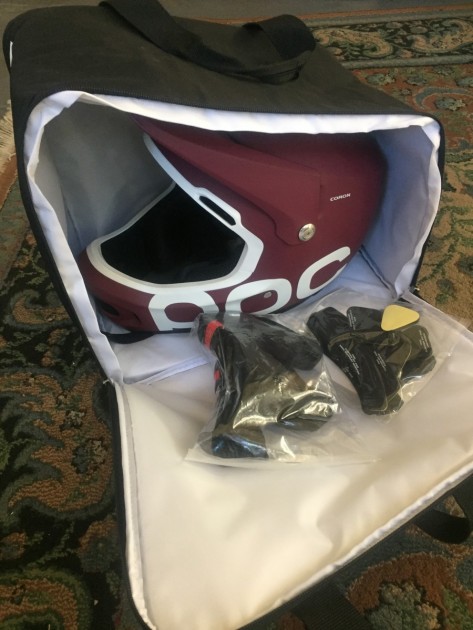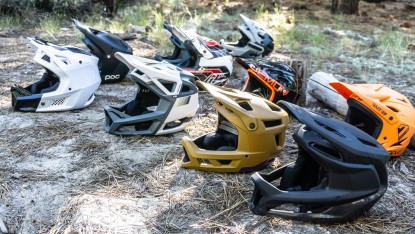POC currently makes two versions of the Coron. The Coron Air Carbon SPIN is nearly identical to the model tested and reviewed here, but now comes with their SPIN rotational impact protection system and is offered in a white/black colorway only. We're linking to the Coron Air Carbon SPIN now. POC also makes the Coron Air SPIN that doesn't have a carbon shell and is significantly less expensive.
July 2019POC Coron Review

Our Verdict
Our Analysis and Test Results
At first glance, the POC Coron threw us off. It has a look of a costume from some futuristic movie. Jokes aside, one thing is for sure; you'll never hear anyone asking what brand helmet you have. POC markets their name quite well by placing it in big, bold letters directly on the side of the helmet. The colorways that POC chose for their line up might not be for everyone, but this helmet features a state of the art protective liner. This liner surpasses any helmet on the market today; it is an advanced fiber material that outperforms previously known shell materials with added benefits when it comes to multi-impact performance, durability, and low weight.
Comfort
The Coron's high levels of protection don't come at the expense of comfort, though. A channel system guides cooling air around your head while carefully designed ear channels assist with any hearing issues you may have. The chin bar also features awesome ventilation for easy breathing without compromising protection. Another great feature is the Coron's liner is removable and washable, so you can wash out all that dust from chasing your friends and banging laps on the chair all day long.
Protection
The Coron is one of the best-designed lids for protection even without having Mips included. We think that stating that one manufacturer is better than the other, is tough - Mips is tested and proven, but that doesn't mean there aren't other great designs out there. POC is one of the companies that has taken protection to another level. The Coron incorporates a new type of shell material, M-FORGE & reg; which is an advanced fiber material that outperforms previously known shell materials with added benefits regarding multi-impact performance, durability and low weight.
The M-FORGE shell is paired with a multi-impact EPP liner for performance over time and in rough use. According to POC, the difference between EPP and EPS (Expanded Polystyrene — what most manufacturers use) is that EPS absorbs energy by plastic deformation and EPP does not deform permanently.
Weight
The Coron is not the lightest helmet in the test. The Coron weighs in at a whopping 41.2 ounces - heavy, which is for sure felt after riding in a lighter helmet for a few hours. Hopefully, POC fixes this issue in the future.
We don't put too much stock into weight, however, especially with the burly, downhill-focused lids. Our Editor's Choice Fox Racing Rampage Pro Carbon Weld comes in at a hefty 43.5-ounces. No big deal.
Ventilation
If you are an enduro rider, the Coron is not the helmet for you - unless you're ok with resting a large lid on your head when climbing.
The Coron has small intake and exhaust ports above the brow and under the visor, which are positioned perfectly for direct airflow on the forehead. The vents direct air through channels that pass the full length of the foam liner to the exhaust ports at the back of the helmet. The largemouth-style chin guard should allow plenty of airflow, while the metal and foam meshes should block mud and water.
Visor
The Coron has a unique visor that we've seen on only a few models of full-face helmets.
The visor is designed to break away if you crash. We believe it. One flaw we see in this design is that the 4 mm bolt needs to be tightened firmly or the visor will move upwards if you're pinning at roughly 40 mph. Seriously.
One of our testers sent it down one of the fastest dirt roads just to test and see if the visor would fly up - it did. No big deal and honestly, many folks might never get going that fast, but we needed to test it out. It will prevent any extra twisting or torsion on your head or neck if you decide to dig the visor into the ground or catch it on a low branch.
Durability
We didn't experience any durability issues with one exception; the cheek pad plastic clips seem a bit cheap. They seem like they will wear out quickly if taken out often to wash. It might be wise not to over-wash these pads.
Extras
The POC Coron comes with additional pads for a precise fit, individually labeled and sticky backed to keep them in position. In case of an emergency, the cheek pads can be removed while the helmet is fitted, and plastic pins slot and slide them back into the same place every time. The main portion of the inner liner can be removed, and machine washed, it uses hidden plastic buttons and clips for secure placement. The Coron uses a classic double-D buckle with a press stud to secure excess webbing.
Value
The Coron might be a bit overpriced. It is not carbon fiber, and it is quite heavy. There is no doubt it is a great helmet with amazing features. That said, with such high-end carbon helmets crushing it in our test, we feel that POC needs to lower the price tag to match the product and market.
Conclusion
The Coron was a staple for riders during our long testing period. This is a popular helmet for good reason. It offers unique features and a superb fit and finish. The multi-impact technology makes the high price tag a reasonable value.


